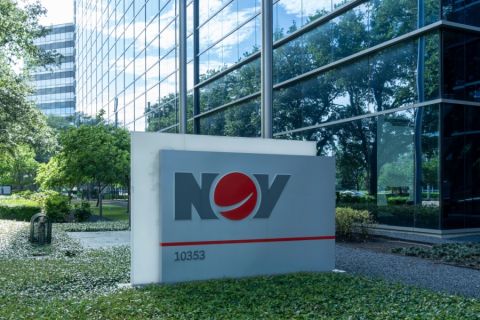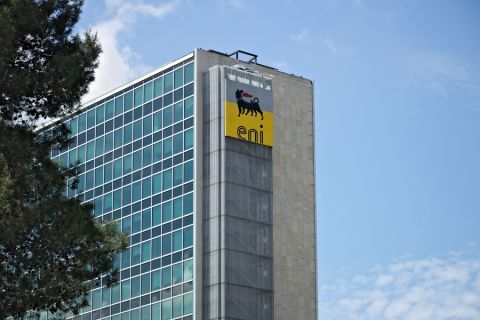For publicly traded midstream companies, this time of year is usually quiet around earnings season. There is sometimes M&A, which we continue to see quite a bit of across the energy value chain, but in terms of ongoing operating results or changes to forward outlooks, quarterly conference calls tend to be quiet.
So, the calls become more about tone and reading between the lines. Below we’ll run through some quotes from management teams on quarterly conference calls and see if we can read into them.
Midstream quotables
Management at Enterprise Products Partners (EPD) is intent on keeping potential competitors out of the NGL pipeline business. The $3.1 billion of new NGL projects announced this quarter are part of the strategy to shut others out.
CEO Jim Teague: “We made a mistake, and maybe it was I made a mistake, when we were the only game in town and that we went after pretty high fees, when I wish we’d have gone after lower fees, because we opened the door for our competition. That won’t happen again. I don’t know how a greenfield project competes with the brownfield project, especially when you have someone like Enterprise that’s going to be damn aggressive in holding market share or even growing it.” Later, Teague commented on EPD’s practice of not using third-party pipelines to offload volumes when capacity is tight. EPD would rather build their own pipelines: “We don’t leverage third-party pipes. We put it in our own.”
Energy Transfer (ET) management is very proud of its NGL export business, especially how ET exports more NGL than anyone else. That may be a shot at existing competitors (EPD is the second-largest exporter, recently surpassed), or would be competitors like ONEOK (with Magellan assets). They were so proud that both CEOs talked it up.
Tom Long, co-CEO: “In total, we continue to export more NGLs than any other company during Q3 and maintained an approximately 20% market share of worldwide NGL exports, as well as nearly 40% of US exports.”
Mackie McCrea, co-CEO: “We got in this export business a little later than most of our competitors, certainly, our biggest competitor. We have gone from nowhere to the leading exporter in the world. And we’re proud of that.”
Williams Cos. (WMB) came into some capital from asset sales and a legal judgment, and they immediately put that capital into acquisitions.
CEO Alan Armstrong on the third-quarter call: “We are acting on opportunities to further high grade our portfolio of assets … proceeds from this asset sale, along with expected proceeds from a recent legal judgment, will help fund [the $1.2 billion of acquisitions WMB announced].”
Over time, many sponsored MLPs have been taken private in deals that have favored the sponsor. MPLX is one of the few remaining sponsored MLPs, and the stock tends to trade at a discount because of that history. On the call, CEO Michael Hennigan made sure to message why sponsor MPC values the structure as is.
“MPLX is a strategic investment for MPC, which now expects to receive $2.2 billion in annual cash flows via the distribution. MPC believes that its current capital allocation priorities are optimal for its shareholders. And MPC does not plan to roll up MPLX.”
Plains All American Pipeline (PAA) trades at a high free cash flow yield, but over time it has tended to use a portion of that free cash flow on bolt-on acquisitions, like the $205 million acquisition announced this quarter. The takeaway some investors have is that free cash flow estimates should assume a few hundred million of bolt-on acquisitions.
CEO Willie Chiang: “We’re going to be very, very disciplined in how we approach it. The valuations are going to be key. But I think you’ll see bolt-on opportunities in both the Permian and outside of the Permian.”
Finally, there was a fun quote from Pembina Pipeline CEO Scott Burrows, who wanted to make one thing very regarding energy transition acquisitions: “We’re not looking at any acquisitions at all in the energy transition space.”
As far as the actual numbers, earnings were very solid across the board, with median beats versus consensus of approximately 4% across the sector. In addition, there were modest upward revisions to guidance in some cases, but most of the companies reiterated prior guidance with just one quarter of results left.
Scary headlines, largely benign
In midstream, there are certain triggers that investors have learned portend bad times for the stocks in the sector. We are seeing some of those trigger headlines today. In contrast to prior bad times for midstream, however, there isn’t much to worry about past the headlines.
Unnecessary M&A
We are seeing midstream companies increasingly active in the M&A market. There are big deals, like Enbridge buying $14 billion of natural gas utilities and ONEOK buying Magellan Midstream, but there are also some very large “bolt-on” acquisitions like Energy Transfer buying Crestwood; or Williams buying $1.2 billion worth of G&P assets in the Rockies. When M&A activity has accelerated in the past, it has led to bidding wars and aggressive multiples that have led to balance sheet pressure on midstream companies.
This time, so far, it has not been bidding wars, but multiples below 10x EBITDA, not the 15x or higher multiples that we’ve seen in the past. So, these latest deals aren’t going off at high multiples, often with strategic value driving visibility into commercial synergies.
Capex creep
Similarly, we are seeing an uptick in growth capital from midstream companies this year, and we continue to see new projects announced from companies like EPD and Targa Resources (TRGP). Growth capex across midstream is expected to be $34 billion in 2023, up $8 billion from 2022. Back in the day, higher capex led to excess pipeline capacity, lower rates and financial distress. What’s different this time is these new projects are generally isolated to good basins backed by ample commitments. The quantity of projects is lower, the quality is higher and, similar to M&A above, the projects are not straining balance sheets.
Aggressive dividend growth
Midstream payouts at the time were ramped up to feed incentive distribution rights, or IDRs, that made MLP founders very wealthy. That aggressive dividend growth was a red flag. This quarter, TRGP announced it would raise dividends 50% next year, PAA raised its distribution 15% and others are talking about raising growth rates as the preferred return of capital method. The growth rates we are seeing these days are mostly off low bases, and they are not impairing balance sheets.
Oil prices
One headline that still matters for midstream stock performance is the oil price. As of this writing, oil prices are back into the high $70/bbl. If oil prices stay at this level or lower, midstream stocks will find a tough road to a fourth year of outperformance in 2024.
Hinds Howard is a portfolio manager at CRBE Investment Management, where he evaluates listed infrastructure and transportation companies in North America and coordinates research of listed transportation companies globally. He is based in Wayne, Pa.
Recommended Reading
NOV Announces $1B Repurchase Program, Ups Dividend
2024-04-26 - NOV expects to increase its quarterly cash dividend on its common stock by 50% to $0.075 per share from $0.05 per share.
Repsol to Drop Marcellus Rig in June
2024-04-26 - Spain’s Repsol plans to drop its Marcellus Shale rig in June and reduce capex in the play due to the current U.S. gas price environment, CEO Josu Jon Imaz told analysts during a quarterly webcast.
US Drillers Cut Most Oil Rigs in a Week Since November
2024-04-26 - The number of oil rigs fell by five to 506 this week, while gas rigs fell by one to 105, their lowest since December 2021.
CNX, Appalachia Peers Defer Completions as NatGas Prices Languish
2024-04-25 - Henry Hub blues: CNX Resources and other Appalachia producers are slashing production and deferring well completions as natural gas spot prices hover near record lows.
Chevron’s Tengiz Oil Field Operations Start Up in Kazakhstan
2024-04-25 - The final phase of Chevron’s project will produce about 260,000 bbl/d.




